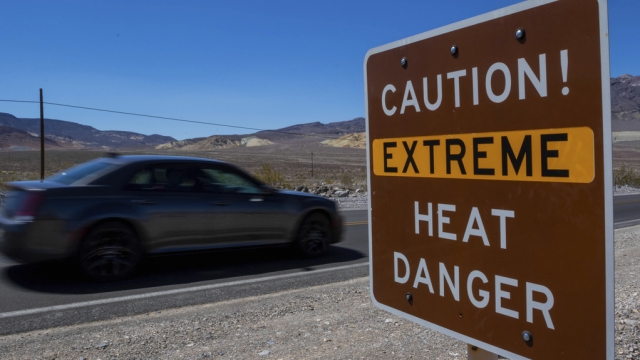Records for extreme heat continue to be broken across the U.S. The triple-digit heat wave in the Southwest looks set to become the longest heat wave on record. Parts of the Southern U.S., Midwest, and south Florida are seeing heat indexes reach over 100 degrees Fahrenheit for extended periods.
"We're expecting this year to be one of the, if not the warmest on record, and we're witnessing that play out in the broader scale of things," said Dan Johnson, Professor at the Department of Geography at Indiana University.
In mid-July, the White House announced a meeting with mayors, local officials, and tribal officials from communities nationwide to prepare for "long-duration extreme heat events."
But historic heat is not just a health and safety concern. For millions of households, it also comes with a huge financial cost.
Energy bills are soaring as people try to keep homes and businesses cool.
The national average household electric bill is set to be higher than previous summers, reaching nearly $200 a month. In many major cities, those bills can climb much higher.
SEE MORE: Death Valley may break global heat record with 130-132 degrees
Many folks are already behind on utility bills. As of March 2023, nearly 20 million households owed a total of $20 billion for power. .
And for millions of Americans, staying cool is just another cost to weigh against food and housing costs. In 2020, nearly twenty-five million households reduced or went without food or medicine to pay for energy.
"The extra couple hundred dollars, means either I can't pay my mortgage, or I can't buy groceries, or I can't pay for my pharmaceutical medications," said Laurie Grant, Vista, California resident.
Assistance programs for energy bills are available in some states and with limited federal funds. Though the Low Income Home Energy Assistance Program has only $6 billion for 2023.
But protection against extreme heat is an urgent basic need, not a luxury.
A report from the public policy research group Center for American Progress estimates extreme heat leads to $1billion in healthcare costs each summer, spurring nearly a quarter of a million emergency room visits and hospital admission for heat l-related illnesses.
SEE MORE: 100 California schools combatting heat by adding shade
A number of design and urban policy decisions contribute to a documented link between a neighborhood's average income, and temperature.
"Asphalt, concrete, metal, building materials all lead to hotter temperatures in urban environments that can exceed ten degrees Fahrenheit above the official temperature. However, this is not just an issue in large cities. Smaller cities and towns can also have pronounced heat island impacts," said Johnson.
NPR compiled data from NASA and the Census Bureau showing the cities with the highest correlation. The hottest neighborhoods also tended to be the poorest – in other words, the families who would struggle the most with staying cool, or paying for heat-related medical needs.
The rise in illness is particularly well documented among lower-income households in urban environments, but rural communities face problems as well with less access to medical facilities, or ability to pay for electricity to stay cool.
According to the United States Environmental Protection Agency, heat is the leading weather-related killer in the U.S., even though most of the deaths are considered 'preventable.'
Between medical costs, rising utility bills, and infrastructure improvements needed to keep communities cool, the financial forecast for extreme summers looks pricey.
Trending stories at Scrippsnews.com



